Introduction
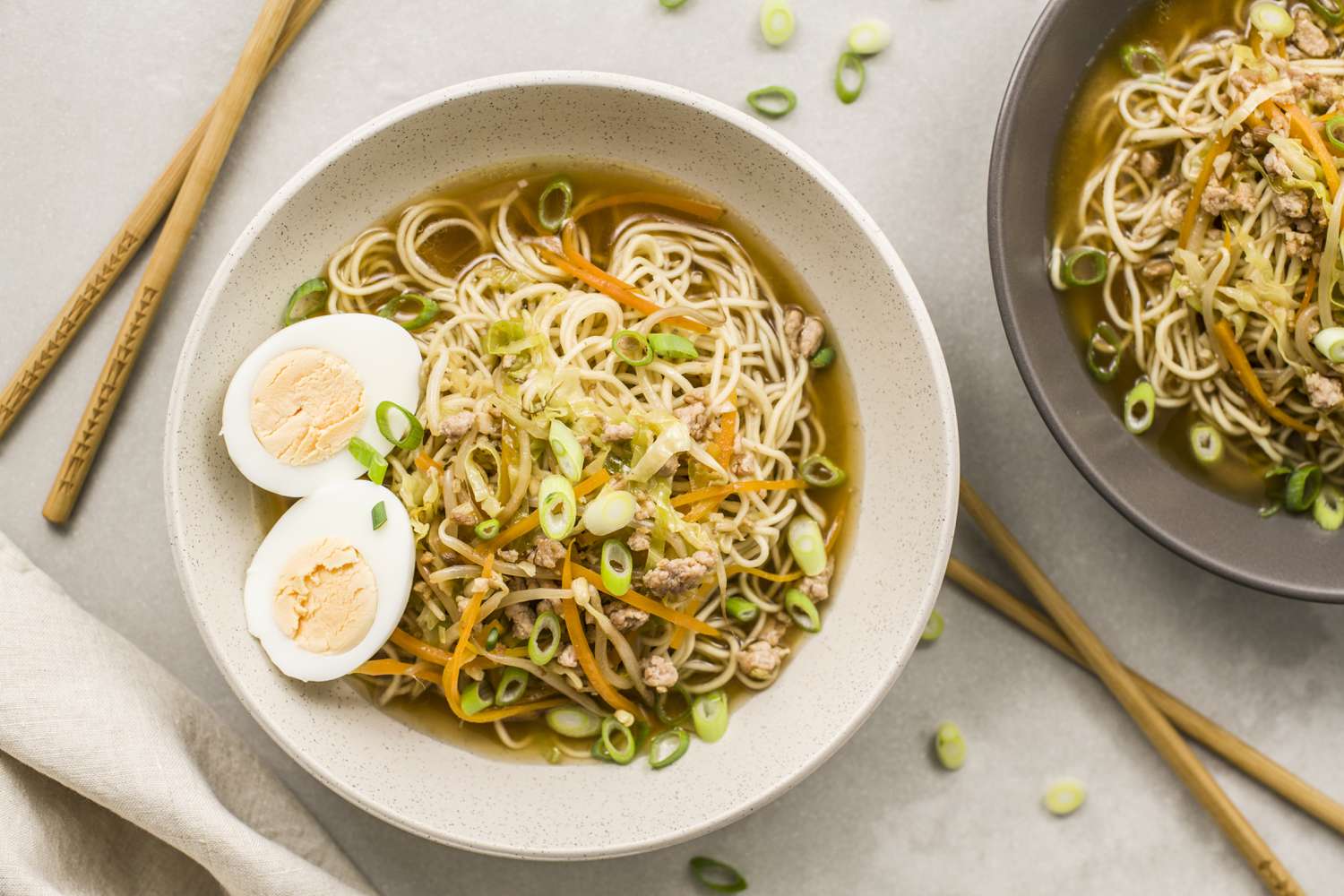
Introduction: Asian noodles are a key component of various cuisines, each with its own unique characteristics. Two popular noodle varieties, Lo Mein and Udon, have gained popularity outside of their native countries. Lo Mein is a Chinese dish featuring stir-fried noodles with vegetables and protein, while Udon is a thick, chewy Japanese noodle commonly served in soups or stir-fries. In this article, we will delve into the origins, flavors, textures, and cooking styles of these two noodles, helping you decipher the differences and choose the right one for your next Asian-inspired meal.
Introduction To Asian Noodle Varieties
Asian cuisine is known for its diverse and delicious noodle dishes, each with its own unique characteristics. From the thin and delicate rice noodles of Pad Thai to the thick and chewy udon noodles of Japan, Asian noodles come in a variety of shapes, sizes, and textures. These noodles play a central role in the culinary traditions of many Asian countries and are loved for their versatility and ability to absorb flavors. Whether stir-fried, boiled, or served in soups, Asian noodles offer a wide range of options to satisfy any noodle lover’s cravings.
Overview Of Lo Mein And Udon Noodles
Lo Mein and Udon noodles are two popular varieties in Asian cuisine. Lo Mein noodles are made with egg, giving them a chewy texture that holds up well in pasta dishes. They are versatile and can be stir-fried or served in soups. On the other hand, Udon noodles are made from wheat and have a thicker, more chewy texture. They are often used in traditional Japanese dishes such as Udon soup. Both noodles offer unique flavors and textures, making them a delicious choice for noodle lovers.
Lo Mein Noodles
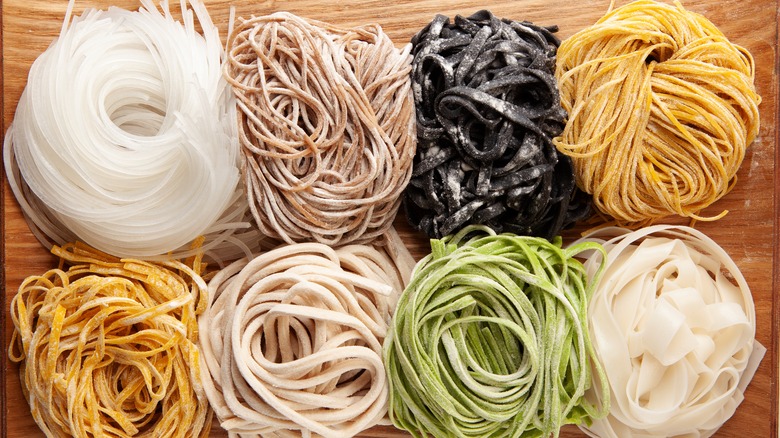
Lo Mein noodles are a popular variety of noodles in Chinese cuisine. These noodles are made with egg, giving them a rich and chewy texture. Lo Mein noodles are versatile and can be used in a variety of dishes. They are often stir-fried with vegetables, meat, and sauce, creating a delicious and satisfying meal. The egg in the noodles adds a depth of flavor and enhances the overall taste of the dish. Lo Mein noodles are a favorite choice for noodle lovers looking for a hearty and satisfying meal.
Characteristics And Origins Of Lo Mein Noodles
Lo Mein noodles are known for their rich and chewy texture, thanks to the addition of eggs in the dough. These noodles originated from China and have become a staple in Chinese cuisine. They are typically made from wheat flour and water, with the addition of egg for extra flavor and texture. Lo Mein noodles are long and thin, similar to spaghetti, and have a slightly yellow color due to the presence of eggs. They can be stir-fried or used in soups, absorbing flavors and creating a satisfying meal.
Popular Lo Mein Dishes And Flavor Profile
Lo Mein noodles are a versatile ingredient in Chinese cuisine and are used in a variety of popular dishes. Some of the most popular Lo Mein dishes include:
- Vegetable Lo Mein: Stir-fried noodles with a colorful assortment of vegetables like carrots, bell peppers, and broccoli.
- Chicken Lo Mein: A flavorful combination of tender chicken, noodles, and vegetables, typically seasoned with soy sauce and other Asian spices.
- Shrimp Lo Mein: Succulent shrimp cooked with Lo Mein noodles, vegetables, and a savory sauce.
- Beef Lo Mein: Tender strips of beef stir-fried with Lo Mein noodles and a delicious sauce.
The flavor profile of Lo Mein dishes is typically savory, slightly sweet, and packed with umami flavors. The noodles absorb the sauce and coat each ingredient, creating a satisfying and flavorful meal.
Udon Noodles
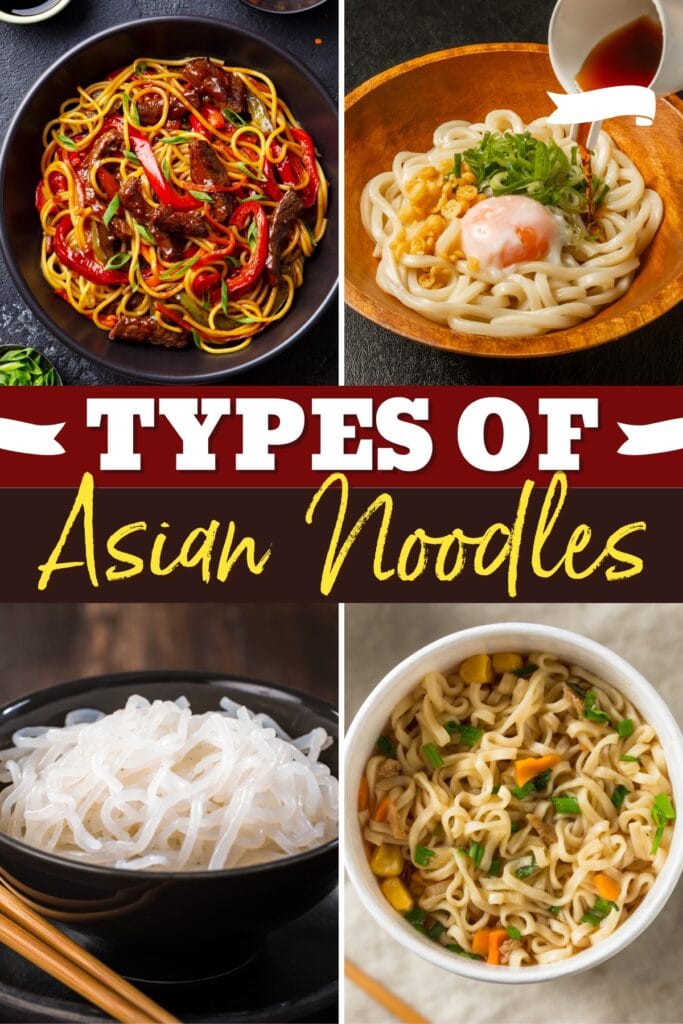
Udon noodles are a type of wheat noodle commonly found in Japanese cuisine. These thick and chewy noodles have their origins in Japan and are known for their unique texture. Unlike lo mein noodles, udon noodles do not contain eggs and are made solely from wheat flour, water, and salt. They have a smooth and slippery surface and are typically wider and thicker than lo mein noodles. Udon noodles are commonly used in soups, such as the popular dish known as udon soup, where they absorb the flavorful broth and provide a satisfying chewiness to the dish. Some popular udon dishes include Hoto, Sanuki, Inaniwa, Kishimen, and Ise Udon.
Characteristics And Origins Of Udon Noodles
Udon noodles are a type of wheat noodle commonly found in Japanese cuisine. These thick and chewy noodles have their origins in Japan and are known for their unique texture. Unlike lo mein noodles, udon noodles do not contain eggs and are made solely from wheat flour, water, and salt. They have a smooth and slippery surface and are typically wider and thicker than lo mein noodles. Udon noodles are commonly used in soups, such as the popular dish known as udon soup, where they absorb the flavorful broth and provide a satisfying chewiness to the dish.
Popular Udon Dishes And Flavor Profile
Udon noodles are commonly used in a variety of delicious Japanese dishes. Some popular Udon dishes include:
- Tempura Udon: This dish features Udon noodles served in a hot, flavorful broth topped with crispy tempura.
- Kitsune Udon: Kitsune Udon is a simple yet satisfying dish consisting of Udon noodles served in a soy-based broth with a slice of fried tofu.
- Niku Udon: Niku Udon is a hearty dish that includes Udon noodles in a savory broth with slices of tender beef and various vegetables.
- Yaki Udon: Yaki Udon is a stir-fried Udon noodle dish that usually includes vegetables, meat, and a flavorful sauce.
The flavor profile of Udon dishes can vary depending on the broth and toppings used. The noodles themselves have a mild, wheaty flavor and a pleasant chewy texture.
Differences In Texture And Appearance

Lo Mein noodles have a thinner and more delicate texture compared to Udon noodles, which are thicker and chewier. Lo Mein noodles are usually made with egg, giving them a softer and silkier texture. They have a smooth and shiny appearance. On the other hand, Udon noodles have a more substantial and robust texture due to their wheat base. They are thicker and have a slightly chewy and springy bite. Udon noodles have a pale and matte appearance, often with a light sheen from the broth they have absorbed.
Texture And Appearance Of Lo Mein Noodles
Lo Mein noodles have a thinner and more delicate texture compared to Udon noodles. They are made with egg, giving them a softer and silkier texture. These noodles have a smooth and shiny appearance, which adds to their visual appeal on the plate. Their thinness allows them to absorb flavors well, making them perfect for stir-fry dishes and other noodle-based recipes. Lo Mein noodles also have a slightly chewy texture when cooked al dente, providing a satisfying bite to every mouthful.
Texture And Appearance Of Udon Noodles
Udon noodles are characterized by their thick and chewy texture, making them a hearty choice for noodle lovers. These noodles have a distinct white color and a smooth surface, which gives them a visually appealing appearance. The thickness of Udon noodles allows them to retain their shape and texture even when cooked for longer periods. When properly cooked, Udon noodles have a firm bite and a slightly elastic texture. Their substantial texture complements broths and sauces, making them a popular choice for soups and stir-fry dishes.
Cooking And Serving Styles

When it comes to cooking and serving styles, Lo Mein and Udon noodles offer different options. Lo Mein noodles are often stir-fried, allowing them to absorb the flavors of various sauces and ingredients. They are commonly served as a main dish, accompanied by vegetables, meat, and seafood. On the other hand, Udon noodles are typically boiled or simmered and served in hot broths. They are commonly found in soups and can be garnished with green onions, tempura, or tofu. The different cooking and serving styles allow for a variety of delicious and satisfying noodle dishes.
Cooking Methods And Techniques For Lo Mein Noodles
Lo Mein noodles are typically stir-fried, allowing them to absorb the flavors of various sauces and ingredients. To cook Lo Mein noodles, start by boiling them according to the package instructions. Drain and rinse them with cold water to prevent sticking. In a hot wok or skillet, heat oil and stir-fry your choice of vegetables, meat, and seafood. Add the boiled Lo Mein noodles, along with soy sauce, oyster sauce, and other seasonings of your choice. Toss everything together until the noodles are evenly coated and heated through. Serve hot as a delicious main dish.
Cooking Methods And Techniques For Udon Noodles
To cook udon noodles, start by boiling them in water according to the package instructions. Unlike lo mein noodles, udon noodles do not require rinsing after boiling. Once the noodles are cooked, drain them and rinse them briefly with cold water to remove excess starch. Udon noodles can be used in various dishes, including soups, stir-fries, and cold salads. They have a slightly chewy texture and absorb flavors well. Serve udon noodles hot or cold, depending on your recipe preference.
Conclusion
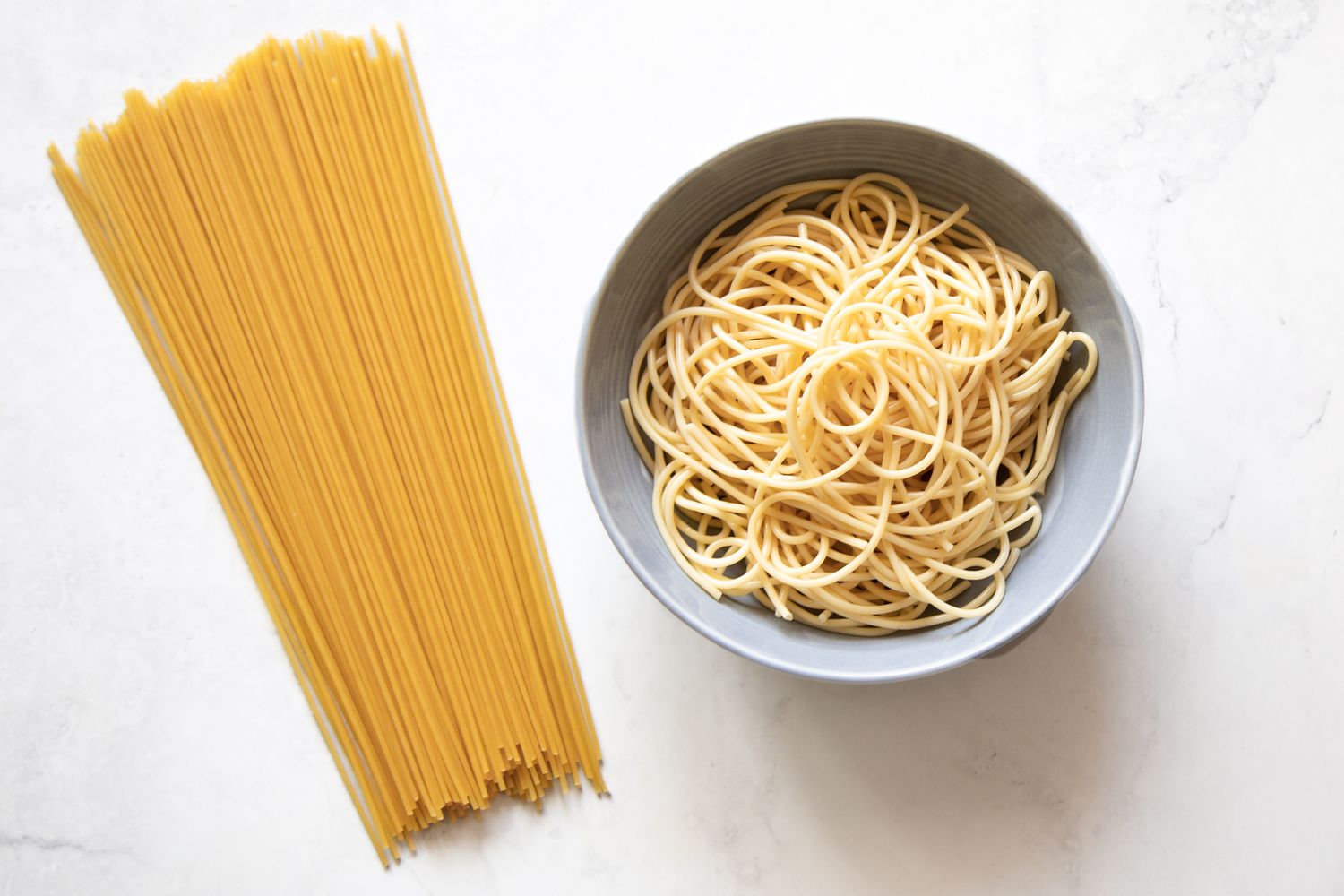
In conclusion, knowing the differences between Lo Mein and Udon noodles can help you choose the right noodle for your Asian dishes. Lo Mein noodles are thin and have a soft and tender texture, while Udon noodles are thick and have a chewy and bouncy texture. Both types of noodles are versatile and can be used in various dishes, but they have distinct flavors and cooking methods. By understanding these key differences, you can enhance your culinary skills and create delicious Asian noodle dishes with the perfect noodle choice.
Key Differences Between Lo Mein And Udon Noodles
Lo Mein and Udon noodles are both popular Asian noodles, but they have key differences that set them apart.
- Noodle Type: Lo Mein noodles are made with egg, giving them a chewier texture, while Udon noodles are made from wheat and have a softer, bouncier texture.
- Size and Shape: Lo Mein noodles are thin and elongated, resembling spaghetti, while Udon noodles are thick and cylindrical.
- Cooking Methods: Lo Mein noodles are typically stir-fried with vegetables and proteins, while Udon noodles are often boiled and served in a broth-based soup.
- Flavor Profile: Lo Mein noodles have a more subtle flavor that complements a variety of sauces, while Udon noodles have a milder taste that lends itself well to absorbing the flavors of the soup or sauce they are cooked in.
By understanding these key differences, you can choose the right noodle for your desired dish and create an authentic Asian culinary experience.
Guidance On Choosing The Right Noodle For Various Dishes
When it comes to choosing the right noodle for different dishes, there are a few factors to consider. For stir-fries or dishes that require a chewier texture, Lo Mein noodles would be a great choice. Their thin and elongated shape makes them perfect for absorbing flavorful sauces. On the other hand, if you’re planning to make a soup-based dish, Udon noodles are ideal as they have a softer texture that can absorb the flavors of the broth. By understanding the characteristics and uses of each noodle, you can ensure that your dish turns out just right.
Common Misconceptions Clarified
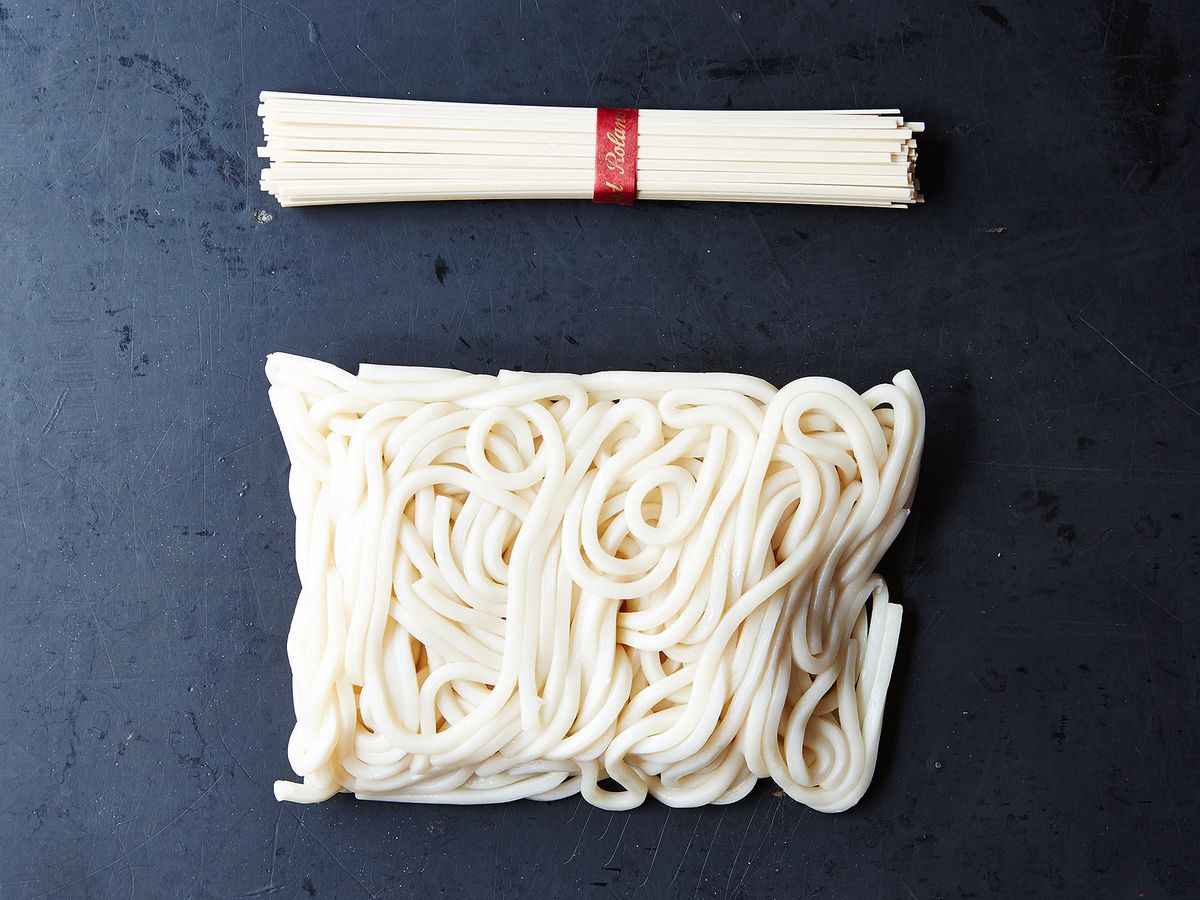
Despite their similarities, there are a few common misconceptions when it comes to Lo Mein and Udon noodles. One misconception is that Lo Mein and Udon are interchangeable. While they can both be used in stir-fries, soups, and other dishes, their textures and flavors are distinct. Another misconception is that Lo Mein and Udon noodles are the same as spaghetti or Italian pasta. However, the cooking techniques and flavors associated with Asian noodles are unique and different from Western pasta dishes. It’s important to understand the characteristics and uses of each noodle to ensure the best results in your Asian-inspired dishes.
Frequently Asked Questions about Lo Mein vs Udon
Q: What is the main difference between lo mein and udon?
A: The main difference lies in the type of noodles used. Lo mein is made from egg noodles, while udon is made from wheat flour noodles.
Q: Are the cooking methods the same for lo mein and udon?
A: No, the cooking methods for lo mein and udon differ. Lo mein is stir-fried, while udon is typically boiled or simmered.
Q: Can I substitute lo mein noodles for udon noodles in a recipe?
A: While it may change the overall flavor and texture, you can substitute lo mein noodles for udon noodles in a recipe if necessary. Just keep in mind that the dish may have a slightly different taste and consistency.
Q: Which noodles are thicker, lo mein or udon?
A: Udon noodles are generally thicker and chewier than lo mein noodles. They have a hearty and dense texture that sets them apart from lo mein noodles.
Q: Which noodles are more commonly used in Chinese cuisine?
A: Lo mein noodles are more commonly used in Chinese cuisine, particularly in dishes that call for stir-frying. Udon noodles, on the other hand, are a staple in Japanese cuisine.
Q: Are there any notable differences in taste between lo mein and udon?
A: Yes, there are notable differences in taste. Lo mein noodles have a mild wheat flavor while absorbing the flavors of the ingredients used in the dish. Udon noodles have a more pronounced wheat flavor and a slightly chewier texture.
Q: Are lo mein and udon dishes typically vegetarian-friendly?
A: Both lo mein and udon dishes can be made vegetarian-friendly by using vegetable-based broths or sauces and omitting animal-based ingredients like meat or seafood. However, it is always recommended to check the specific dish’s ingredients.
Q: Can I enjoy lo mein and udon dishes if I have a gluten intolerance?
A: If you have a gluten intolerance, you should opt for gluten-free alternatives to lo mein and udon noodles. There are gluten-free versions of both noodles available in some stores or online.
Q: Which type of noodle is more suitable for soups, lo mein or udon?
A: Udon noodles are more commonly used for soups due to their chewy texture and ability to hold up well in broth. Lo mein noodles, being thinner, are more suitable for stir-frying and absorbing the flavors of saucy dishes.
Q: Can I enjoy both lo mein and udon dishes at the same meal?
A: Absolutely! If you enjoy both lo mein and udon, you can certainly indulge in both dishes at the same meal. It’s a great way to experience the distinct flavors and textures of each noodle type.
Q: Are lo mein and udon dishes considered healthy?
A: The healthiness of lo mein and udon dishes depends on the ingredients used and the cooking method. It is possible to make healthier versions by incorporating more vegetables and using lean protein sources. However, dishes with excessive oil, sodium, or added sugars may be less healthy.
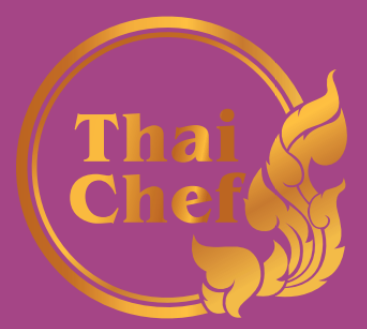
We are a small takeaway restaurant offering a great selection of food cooked by our Thai chef. Table spaces are limited, so please book in advance.